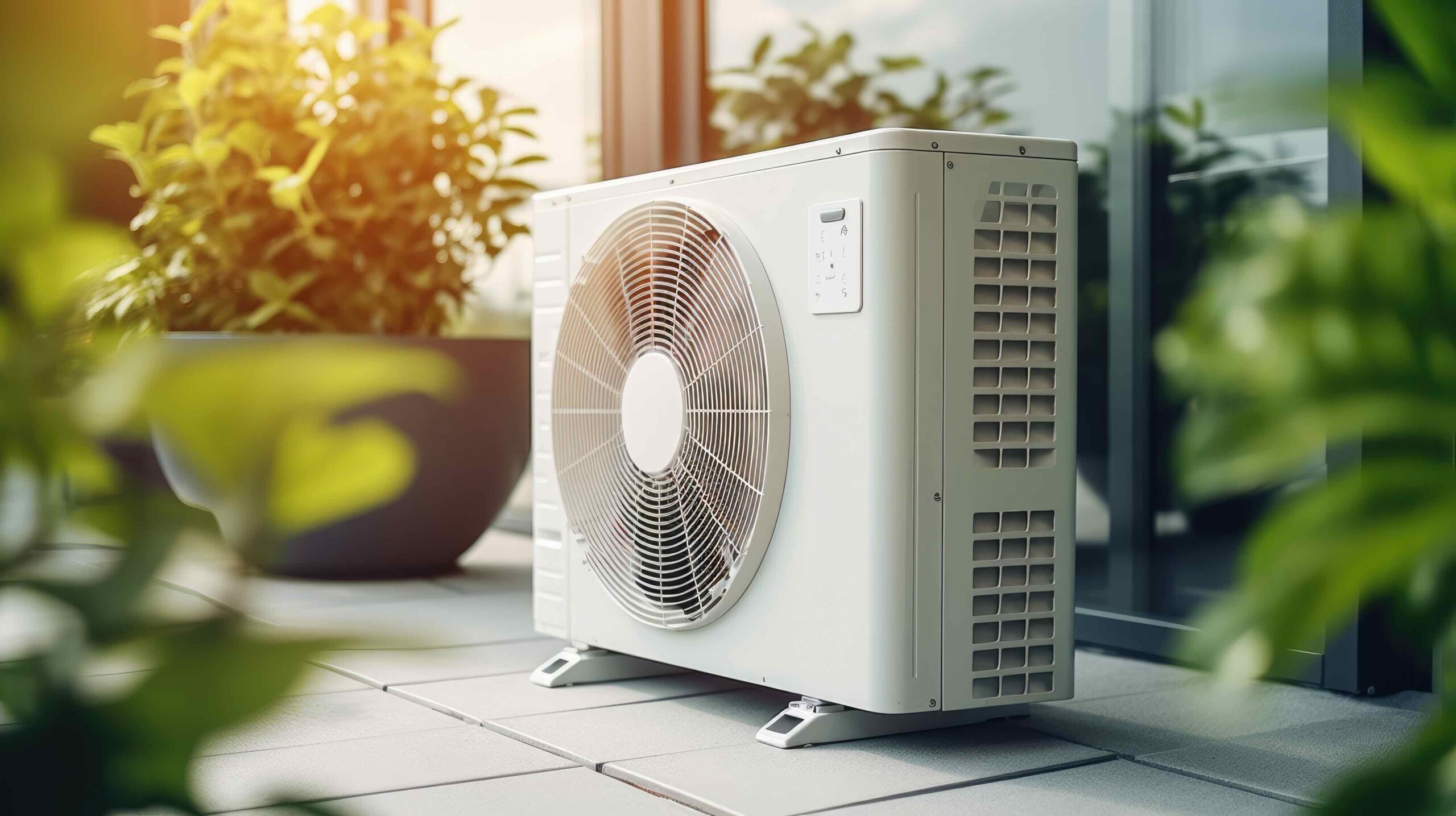After the government announced that its air source heat pump scheme has missed its first-year target, we explore why this might be the case, including analysing whether heat pumps are a suitable replacement for gas boilers and even how flawed SAP methodologies might even lead to a worse EPC rating after installing a low-carbon heat pump.
Let’s rewind the clock to April 2022 when the government announced a £5000 grant for homeowners in England and Wales when replacing their old gas boilers with low-carbon heat pumps. The plan, part of the NetZero by 2050 initiative, was supposed to encourage homeowners to take steps to heat their homes in a more environmentally friendly way.
We previously wrote about how homeowners would need to take important steps to give their heat pump the best chance of success, including ensuring their home was airtight, as we recognised that even with the help of grants, air pumps are not a like-for-like replacement for gas boilers.
Now, one year on, the government has announced that they have missed their installation targets by some way – only installing around 50% of the number it had planned to. In fact, at the current rate of installation, it would take over 400 years for every home to have an air source heat pump installed.
Let’s explore why this might be the case…
The cost of installing air-source heat pumps
How much does it cost to install an air source heat pump? It’s likely the very first question on the minds of those considering the options of heating their home. To buy and install an air source heat pump, homeowners can expect to pay between £8,000 – £18,000, meaning even with a government grant, homeowners likely face spending thousands of pounds, especially given the grant only covers the purchasing cost and not the cost of installation. For context, a gas boiler typically costs £2,000 – £4,000 to have supplied and fitted.
Where to site air source heat pumps
How big are air source heat pumps and do i have room for one? This is probably the next question to consider…
Over 85% of homes are currently heated using gas boilers connected to the mains gas grid, meaning they also likely have a space inside their home to position their boiler – in many cases, this will be a boiler cupboard.
Air source heat pumps are typically around 1.5m high x 1m wide x 0.3m deep, making them a little larger than an average washing machine and they must be positioned outside. Whilst they can be floor or wall-mounted they can’t be blocked or covered meaning air-source heat pumps are not the most aesthetically pleasing addition to your home. For some, this alone would be enough of a reason to disregard air-source heat pumps as a viable alternative to gas heating.
Adapting your home ready for an air source heat pump installation
Although most of us understand the need to reduce our carbon footprint and would like to play a part in doing so, the reality of moving to alternatives that are promoted as being ‘greener’ is far from easy.
Air source heat pumps are able to emit three units of heat for every unit of air they draw in, meaning on the face of it, they are a ‘no-brainer’ when searching for an efficient alternative to gas heating. However, air-source heat pumps are not able to heat water to the same temperature as gas boilers, meaning to heat our homes to the same level, we’d all likely need larger radiators to deliver the same level of cosiness – an expense and inconvenience that for many is a step too far.
Furthermore, to get the most out of the shiny new heat pump sitting in the garden homeowners will need to ensure their homes are much more airtight and well-insulated than most currently are. Again, a financial and practical cost that makes the air source heat pump an unviable solution and perhaps explains their lack of uptake to date, especially considering the UK old housing stock is amongst the worst insulated in Europe.
Professionals to install air source heat pumps
To have any chance of meeting the government’s installation targets, it’s anticipated that by 2028 the UK will need over 30,000 installers across the country. As it stands, the number of trained air-source heat pump installers is around 4,000.
This is a challenging training target that is not helped by the fact that as it stands, professionals earn far more installing gas boilers than air source heat pumps, giving little-to-no incentive to retrain.
The cost of running air-source heat pumps
Given air-source heat pumps are significantly more efficient than gas boilers on paper, it would be anticipated that after installation the homeowner would see drastic reductions in their energy bill as they begin to claw back some of their initial outlay.
However, despite being more efficient on paper, they’re powered by electricity which, in the current economic climate, is vastly more expensive than gas – three times as expensive in fact, which more than offsets any efficiency in performance.
Furthermore, as already mentioned, air-source heat pumps don’t deliver like-for-like water temperature for wet-heating and hot water systems meaning they will likely be running for longer and even then may not be able to deliver a like-for-like temperature of hot water compared to a gas boiler.
The impact on EPC rating after having an air source heat pump installed
The impact of installing an Air Source Heat Pump (ASHP) on the Energy Performance Certificate (EPC) can vary significantly due to several factors. There is a common misconception that the EPC rating directly reflects a property’s energy efficiency, but this isn’t entirely accurate. The EPC rating is primarily based on the operational cost of running the property, and it is determined through a specific methodology. However, it doesn’t take into consideration factors like individual occupant behaviour and personal preferences regarding how one uses their property. The EPC rating is established based on assumed occupancy and heating patterns, creating a standardised benchmark. Consequently, when transitioning from a gas boiler to an ASHP, it’s common for the EPC rating to decrease, as previously mentioned. On the bright side, this change results in a substantial reduction in CO2 emissions. This reduction occurs because a significant portion of the UK’s electricity comes from renewable sources such as wind turbines, nuclear power, and solar PV panels.
As an example, we conducted a test on a 1950s house with a new extension. This house originally had a 73C rating on the EPC and was estimated to emit 15.54 tons of CO2 annually, powered by an 89.5% efficient gas combi boiler. However, when we replaced the gas boiler with an ASHP, the EPC rating dropped to 25F, but the CO2 emissions decreased to 8.03 tons per year. The government has recognized the importance of ASHPs in achieving its net-zero emissions target, but unfortunately, EPCs are being adversely affected.
Should I get an air-source heat pump?
Air source heat pumps can be an effective solution for a small number of households who meet a very specific set of circumstances.
However, on the whole, we feel that the UK is not yet ready to embrace air-source heat pumps given the number of hurdles that stand in the way of this being a cost-effective solution to becoming more carbon friendly.



